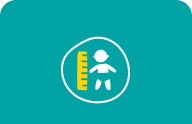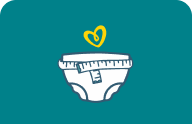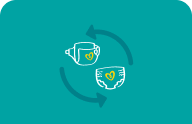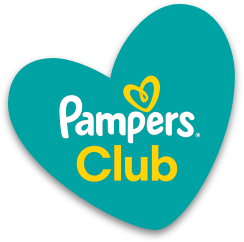Baby-Led Weaning: Your Baby Begins Self-Feeding
Have you ever wondered if there was an alternative to spoon-feeding your baby and dealing with all those jars of baby food? Well, there may be! Baby-led weaning is a method in which babies begin feeding themselves with pinky-sized finger foods from the get-go. Find out more about baby-led weaning, learn if it’s right for you and your baby, and discover how you can implement it at home.
What Is Baby-Led Weaning (BLW)?
Baby-led weaning, abbreviated as BLW and also known as baby-led feeding, is a growing international trend in which babies 6 months and older feed themselves soft solid foods with their hands. The idea behind the BLW method is that it allows your baby to explore foods with different textures and self-regulate the amount of food they’d like to eat.
Traditionally, when introducing solids, parents begin spoon-feeding their infants from around 6 months of age with pureed foods and infant cereal. Gradually, parents expand their baby’s menu to include foods with coarser textures, such as mashed and chopped foods, served with a spoon, and then finger foods. Finally, babies are introduced to family foods (the same foods eaten by the entire family at mealtime) when they’re about 12 months old.
Benefits of Baby-Led Weaning
The main principle of baby-led weaning is allowing babies to guide the food into their mouths on their own. This method replaces spoon-feeding where you as the parent may need to pretend that the spoon is a rocket, an airplane, or a train in order to get your little one to take a bite.
Some studies have shown that BLW has many advantages for babies, including
honing fine motor skills and oral development through the action of self-feeding
less fussiness
less demand for food
a feeling of independence/control when it comes to
starting the meal
choosing what to eat from among the foods on offer
setting the pace of the meal
choosing the amount to be eaten.
responding to hunger and satiety cues more easily
a lesser chance of being overweight/obese
eating the same foods as the entire family.
Risks and/or Disadvantages of Baby-Led Weaning
Researchers are investigating not only the possible benefits but also the potential risks and disadvantages of baby-led weaning, some of which are also relevant for the traditional spoon-feeding method of introducing solids. For example, you’ll need to ensure that your baby is getting the proper amount of iron in their diet, as this (along with other nutrients) is essential for healthy growth and development.
If you’re considering baby-led weaning, check in with your child’s healthcare provider to weigh the pros and cons together and decide whether it is a good choice for you and your baby.
Choking
The chief concern when it comes to baby-lead weaning is the possibility of choking. As your baby is learning to eat, they’ll move food around in their mouth, biting and attempting to chew whether they have baby teeth or not. Since a baby’s air passages are still very small, there is a possibility of choking. However, studies have suggested that if parents take the right precautions, baby-led weaning is just as safe as spoon-feeding as a way of introducing solid foods.
Always supervise your child during self-feeding. Ensure your child is seated upright and don’t leave them unattended. Offer your little one foods that are easy for them to pick up, yet easily mashable in their mouth, or easily gnawable without turning into a choking hazard.
Foods High in Salt and Sugar
During the complementary feeding stage (from 6 months old until about 1 to 2 years of age), don’t offer your little one food that is heavily salted, sweetened, spiced, or buttered. These additives can disguise the natural taste of different foods and could have long-term, harmful effects on your baby’s health. Keep this in mind as you plan and prepare meals and as your little one begins to eat food from the family table, as many processed foods are high in sodium and/or sugar.
When to Start Baby-Led Weaning
You can start baby-led weaning when you would typically introduce solid foods, which is around 6 months of age. This is usually when spoon-feeding with solid foods (but actually pureed and mashed foods) and infant cereals would take place. However, if you’ve chosen to try baby-led weaning, you’d skip spoon-feeding and start directly with finger foods cooked to a soft texture and cut into strips (more on this in the next section).
Around 6 months is recommended as the ideal time to introduce solid foods as a complement to breastfeeding or formula feeding because it’s around the time your baby
has lost the tongue thrust reflex (which helped them breastfeed)
is able to sit up unsupported
can bring food to their mouth
can chew (if they have some baby teeth) and swallow food.
Whether you choose spoon-feeding or baby-led weaning, you should exclusively breastfeed (or bottle-feed) until 6 months of age. After that, you can start introducing complementary foods while continuing breastfeeding or formula feeding until your baby turns 1.
You can check out our baby feeding schedule for more information on how much and how often to feed your little one in their first year.
How to Start Baby-Led Weaning
Here are some tips on how to begin BLW:
Choose the right foods. Start with soft, easy-to-grip foods that can be cut into manageable sizes (Check out our section below, Best Food for Baby-Led Weaning to find out more). Offer foods that are not too hard, small, or round (to avoid choking hazards).
Prepare for self-feeding. Allow your baby to explore and feed themselves, even if it means they make a mess. Ensure foods are cut into strips or sticks, making it easier for babies to grasp.
Encourage exploration. Let your baby pick up and taste different textures and flavors.
Supervise at all times. Always stay with your baby during mealtime to ensure they are safe and not at risk of choking. Avoid distractions and focus on your baby while they are eating.
Focus on family meals. Include your little one in family meals by offering them small pieces of what you’re eating, provided the food is safe and age-appropriate. This helps your baby develop social eating habits and encourages them to try a variety of foods.
Keep breast milk or formula as primary nutrition. Continue to breastfeed or offer formula as the main source of nutrition during the first year, with solids complementing it. Offer solid foods alongside milk feeds, but not as replacements.
Stay positive and patient. Every baby moves at their own pace, so allow your baby to take their time and adjust to self-feeding. Avoid pressure; keep mealtime fun and relaxed.
Best Foods for Baby-Led Weaning
If you’re thinking about trying baby-led-weaning with your 6-month-old, here are some of the best BLW first foods to try. Remember to ensure all foods are soft enough for your baby to mash or chew with their gums or teeth:
Carrots, steamed and softened
Sweet potatoes, roasted, softened, and peeled
Chicken, cooked until soft
Beef, cooked or stewed until soft
Cooked tofu
Broccoli, steamed and softened
Ripe banana
Avocado
Pasta, boiled (well-cooked) spiral shapes or strips of lasagna.
With baby-led weaning you’ll want to offer food shapes and sizes that are easy for your infant to hold, so opt for cutting most things into sticks or strips about the length of your pinky finger. For example, offer a floret of steamed broccoli, a steamed carrot stick, or a small strip of soft-cooked chicken or beef. A handy tip: You know it’s the right size if there’s a bit of the food protruding from your baby’s fist when holding it.
Avoid offering foods that are hard, small, coin-shaped, slippery, crunchy, sticky, or tough to chew. These types of foods can lead to choking.
Here’s an overview of our baby-led weaning tips to help you get started:
The Bottom Line
Baby-led weaning is an alternative method to spoon-feeding when it comes to introducing your baby to solid foods at around 6 months of age. With this method, your baby feeds themself with foods cut into sticks or strips no bigger than your pinky finger.
This method of self-feeding encourages your baby to be independent and allows them to make decisions, such as how much to eat and when to stop eating once full. Other benefits may include your baby being less fussy or demanding about eating, a lesser chance of overeating, and the opportunity to eat the same foods as the rest of the family from the get-go.
Studies have shown that the risk of choking with baby-led weaning is no different than with spoon-feeding. However, if you’re providing the same foods for your baby as the rest of your family, make sure that your baby’s portion isn’t salted, seasoned, or sweetened.
If you’re thinking of trying baby-led weaning instead of the more traditional route of spoon-feeding your little one, speak to your child’s healthcare provider. Weigh the pros and cons together and decide whether this method of self-feeding is right for you and your baby.
If you’re considering the traditional route of introducing your baby to solids, check out our guide all about your baby’s first food.
While you’re here, why not download the Pampers Club app and receive rewards and discounts on your diaper purchases. Trust us, it’ll be worth it!
How We Wrote This Article The information in this article is based on the expert advice found in trusted medical and government sources, such as the American Academy of Pediatrics and the American College of Obstetricians and Gynecologists. You can find a full list of sources used for this article below. The content on this page should not replace professional medical advice. Always consult medical professionals for full diagnosis and treatment.
Join a World of Support
through Pregnancy and Parenthood.
TRACK WITH TOOLS
LEARN WITH EXPERTS
GET REWARDED













